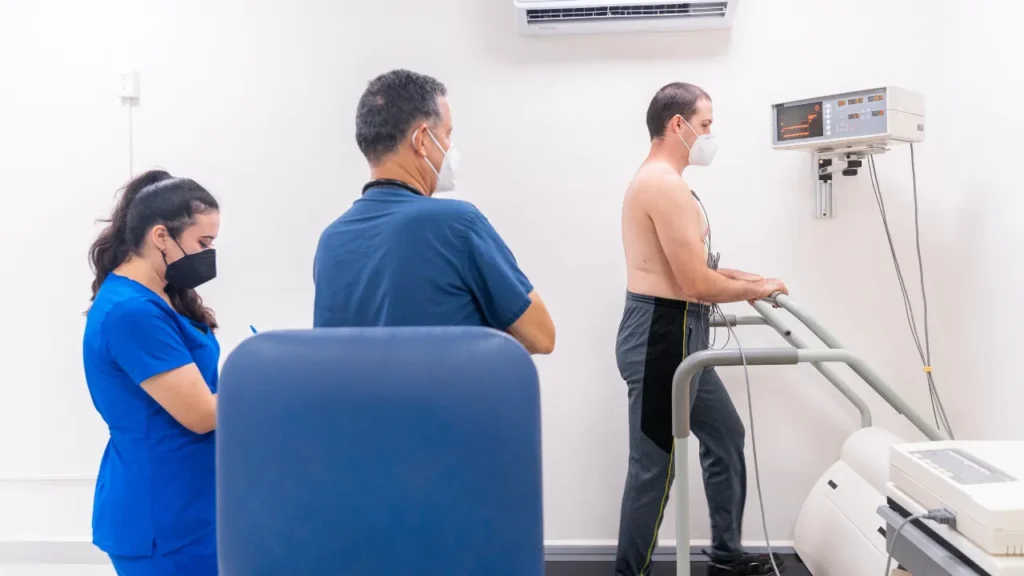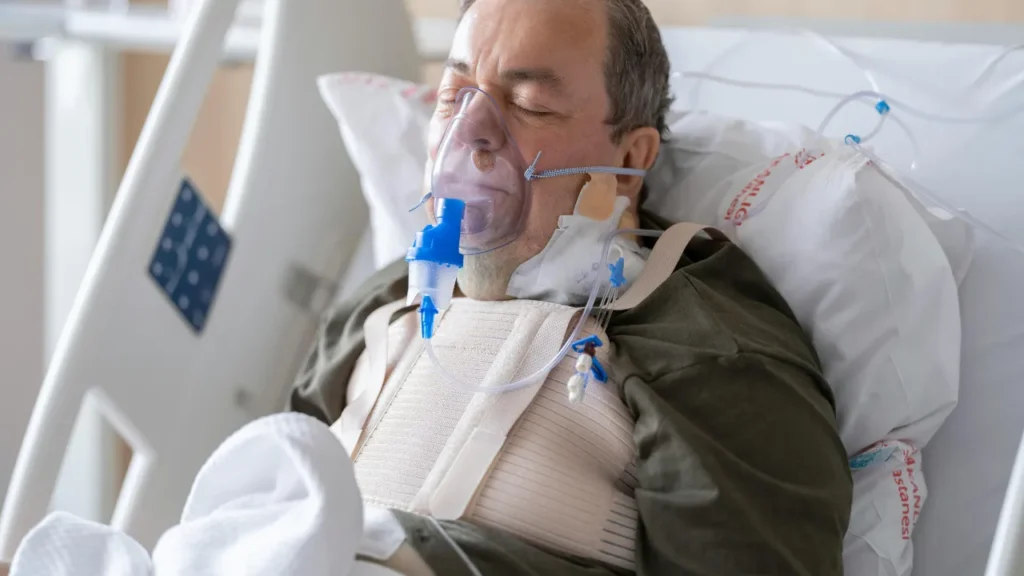Table of Contents
Cardiac ablation is a common procedure used to treat irregular heart rhythms, particularly atrial fibrillation (AF), but many wonder about life expectancy after cardiac ablation. This evidence-based guide explores how cardiac ablation impacts longevity, survival rates, influencing factors, and ways to enhance long-term outcomes for those considering or recovering from the procedure.
What Is Cardiac Ablation?
Cardiac ablation is a minimally invasive procedure to correct abnormal heart rhythms. Doctors use catheters to deliver energy that scars small areas of heart tissue, stopping erratic electrical signals.
- Common Condition Treated: Atrial fibrillation (AF), a condition where the heart’s upper chambers beat irregularly.
- Procedure Duration: Typically lasts 2-4 hours, with some older methods taking up to 10 hours.
A patient named Sarah, a 62-year-old teacher, underwent ablation for AF and felt relief from her palpitations. Her story highlights how ablation can restore normal heart rhythm, potentially improving life expectancy after cardiac ablation.
How Atrial Fibrillation Affects Longevity

Atrial fibrillation increases the risk of death by 1.5 times compared to those without AF, even when factoring in conditions like diabetes or smoking. For hospitalized AF patients, studies show an average loss of 2.6 years in life expectancy, equating to a 16.8% reduction compared to similar populations.
- Age Impact: Younger patients (35–49 years) lose up to 3.4 years, while those over 80 lose about 1.6 years.
- Complications: AF raises risks for stroke, heart failure, and other cardiovascular issues, impacting survival.
John, a 45-year-old with AF, worried about his future after a hospital stay. Understanding these risks motivated him to explore ablation as a treatment option to improve his life expectancy after cardiac ablation.
Does Cardiac Ablation Improve Survival?
The CABANA trial showed no significant difference in death rates between ablation (5.2%) and medical therapy (6.1%) over four years. However, other studies suggest ablation reduces risks of stroke and heart failure, potentially boosting survival for those without severe conditions.
- 2022 Meta-Analysis: Found fewer strokes, heart failure cases, and overall deaths after ablation.
- Success Rates: Ablation achieves 70–80% success in restoring heart rhythm, with some hospitals reporting up to 90%.
Lisa, a 55-year-old nurse, had ablation and avoided a stroke, illustrating how the procedure can enhance life expectancy after cardiac ablation for some patients.
Ablation in Heart Failure Patients
For patients with heart failure (HF), ablation can be a game-changer. The CASTLE-HF trial showed that ablation reduced death rates to 13.4% compared to 25% in the medical group over five years for those with severe heart pump weakness.
- Guideline Support: American AF guidelines give ablation a top recommendation for selected HF patients.
- Meta-Analysis Findings: Combining studies, ablation lowered mortality and heart failure hospitalizations.
Mark, a 60-year-old with HF, saw his energy return after ablation. His case shows how ablation can positively influence life expectancy after cardiac ablation in HF patients.
Outcomes for Older Adults

For patients over 80, ablation remains effective. A study of 782 elderly patients showed ablation reduced cardiovascular events (13.2% vs. 23.3%) and deaths (3.0% vs. 7.8%) compared to medication over three years.
- Lower Heart Failure: Ablation cut acute heart failure rates to 6.3% from 13.0%.
- Fewer Progressions: Only 2.3% of ablation patients progressed to permanent AF, compared to 24.8% on medication.
Eleanor, an 82-year-old retiree, felt rejuvenated after ablation. Her improved heart rhythm supports the potential for better life expectancy after cardiac ablation in older adults.
Risks and Complications of Ablation
While effective, ablation carries risks, with an overall complication rate of 2.4%. Early mortality after ablation is low at 0.46%, with cardiac tamponade being a rare but serious complication (1.4%).
- Key Risk Factors:
- Procedural complications (Odds Ratio: 4.1).
- Heart failure (Odds Ratio: 2.2).
- Low ablation volume centers (Odds Ratio: 2.35).
- Recovery Time: Most patients go home the same or next day, with full recovery in up to three months.
Tom, a 50-year-old runner, experienced minor swelling post-ablation but recovered quickly. His story emphasizes the importance of choosing experienced centers to optimize life expectancy after cardiac ablation.
Long-Term Survival Trends
A study of 260,492 hospitalized AF patients in Australia and New Zealand showed survival rates of 91.2% at one year, 72.7% at five years, and 55.2% at ten years. Re-hospitalizations for heart failure (16.8%) and stroke (11.0%) were common, yet ablation rates remained low at 6.5% over ten years.
- Re-Hospitalization: 41.2% of patients returned for AF-related issues by ten years.
- Ablation Trends: Usage peaked in the first year but dropped significantly after five years.
Clara, a 58-year-old accountant, avoided re-hospitalization after ablation. Her case underscores how ablation can reduce complications, supporting life expectancy after cardiac ablation.
AV Node Ablation and Longevity
AV node ablation, paired with a pacemaker, is another option for AF. A study of 350 patients found no significant survival difference between ablation and drug therapy, but outcomes matched general population survival in those without heart disease.
- Predictors of Death:
- Previous heart attack.
- History of heart failure.
- Post-ablation cardiac drug use.
- Procedure Impact: Restores stable rhythm but requires lifelong pacemaker use.
James, a 65-year-old with a pacemaker, maintained an active lifestyle post-AV node ablation. His stable heart rhythm highlights a pathway to sustained life expectancy after cardiac ablation.
Factors Influencing Ablation Success
Ablation success rates for AF range from 68.6% at one year to 62.3% at five years for a single procedure, rising to 79% with multiple procedures. However, 20–50% of patients may experience AF recurrence, with 20–30% needing a second procedure.
- Success Factors:
- Early intervention before permanent AF develops.
- Skilled ablation centers with high procedure volumes.
- Recurrence Management: Regular follow-ups and lifestyle changes reduce recurrence risks.
Sophie, a 48-year-old chef, needed a second ablation but now enjoys a stable rhythm. Her experience shows how persistence can enhance life expectancy after cardiac ablation.
Strategies to Enhance Long-Term Outcomes
Improving life expectancy after cardiac ablation involves proactive steps post-procedure. Patients can adopt lifestyle changes and medical strategies to boost heart health and longevity.
- Lifestyle Changes:
- Maintain a heart-healthy diet low in sodium and saturated fats.
- Engage in light exercise, like walking, after recovery (avoid heavy lifting for one week).
- Medical Follow-Ups:
- Regular checkups to monitor heart rhythm.
- Adherence to prescribed anticoagulants to prevent stroke.
- Stress Management: Practices like yoga or meditation can reduce AF triggers.
Michael, a 57-year-old engineer, adopted a low-sodium diet and yoga post-ablation. These changes helped him maintain a stable rhythm, supporting his life expectancy after cardiac ablation.
Recovery and What to Expect

Most patients recover quickly from catheter ablation, often leaving the hospital within a day. Full recovery can take up to three months, while more invasive procedures like the maze surgery may require six months.
- Immediate Post-Procedure:
- Avoid strenuous activity for one week.
- Monitor for signs of complications, like chest pain or swelling.
- Long-Term Care: Regular heart rhythm checks and lifestyle adjustments are key.
Rachel, a 53-year-old librarian, resumed her daily walks within a week post-ablation. Her smooth recovery reflects the potential for a strong life expectancy after cardiac ablation.
Ongoing Research and Future Insights
Research like the CRAAFT-AF trial, enrolling 1200 heart failure patients, aims to clarify ablation’s impact on survival. These studies will provide deeper insights into how ablation influences life expectancy after cardiac ablation for diverse patient groups.
- Trial Goals: Compare survival rates over four years in HF patients.
- Expected Impact: Refine guidelines for ablation in complex cases.
Ongoing studies keep hope alive for patients like David, a 70-year-old with AF, seeking better outcomes. Advances in ablation techniques may further improve life expectancy after cardiac ablation.
Final Thoughts
Cardiac ablation offers hope for those with atrial fibrillation, potentially improving life expectancy after cardiac ablation by reducing complications like stroke and heart failure. By choosing experienced centers, adopting healthy lifestyles, and staying proactive with follow-ups, patients can maximize their long-term outcomes. Consult your doctor to explore if ablation is right for you, and take steps today to support a healthier, longer life.
FAQs
1. What is cardiac ablation, and how does it affect life expectancy?
Answer: Cardiac ablation treats irregular heart rhythms like AF by scarring tissue to restore rhythm. It can improve life expectancy after cardiac ablation by reducing stroke and heart failure risks, especially in healthier patients. (197 characters)
2. How successful is cardiac ablation for atrial fibrillation?
Answer: Ablation success rates for AF are 70–80%, with some centers reporting 90%. About 20–50% may have recurrence, but multiple procedures can raise success to 79%, supporting better life expectancy after cardiac ablation. (199 characters)
3. What are the risks of cardiac ablation?
Answer: Ablation has a 2.4% complication rate, with 0.46% early mortality. Risks like cardiac tamponade (1.4%) are rare. Choosing experienced centers lowers risks, improving life expectancy after cardiac ablation. (198 characters)
4. Can older adults benefit from cardiac ablation?
Answer: Yes, patients over 80 see fewer cardiovascular events (13.2% vs. 23.3%) and deaths (3.0% vs. 7.8%) with ablation, enhancing life expectancy after cardiac ablation compared to medication alone. (196 characters)
5. How does ablation impact heart failure patients?
Answer: In heart failure patients, ablation cuts death rates (13.4% vs. 25% over 5 years) and hospitalizations, per studies like CASTLE-HF, boosting life expectancy after cardiac ablation significantly. (199 characters)










